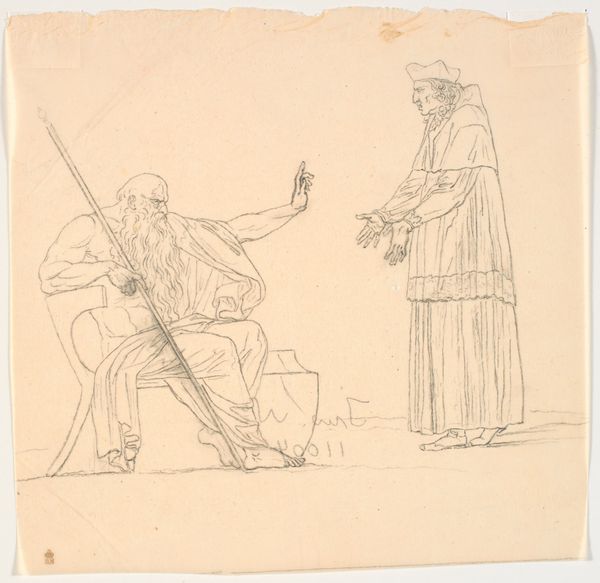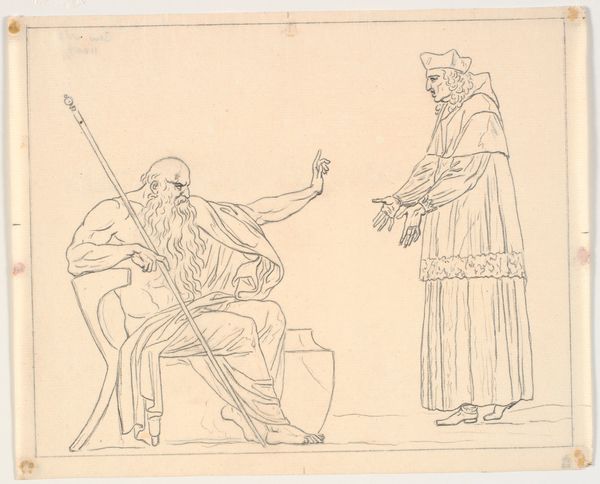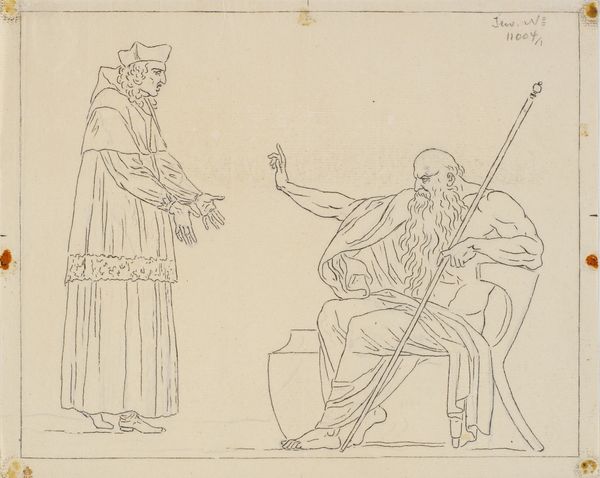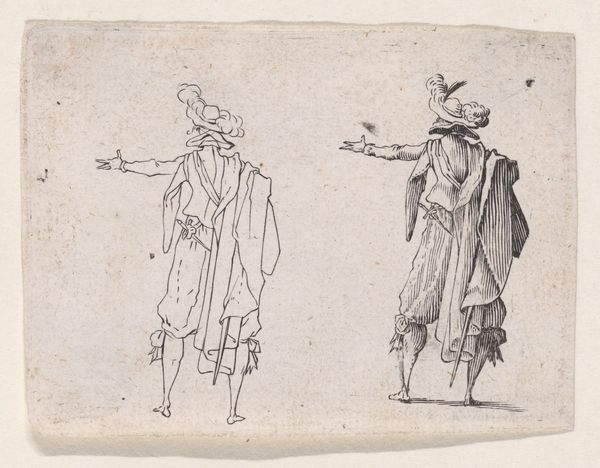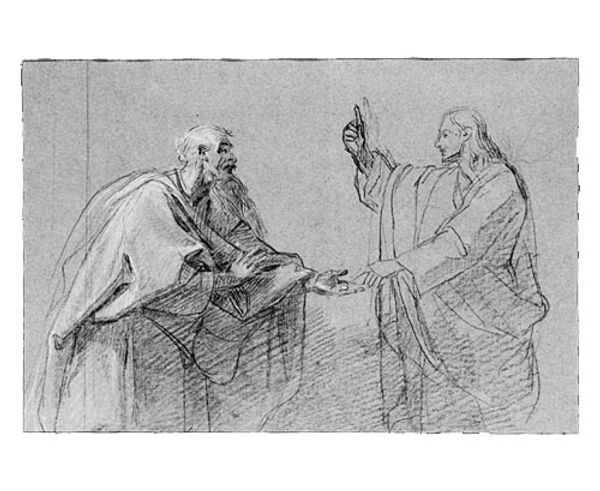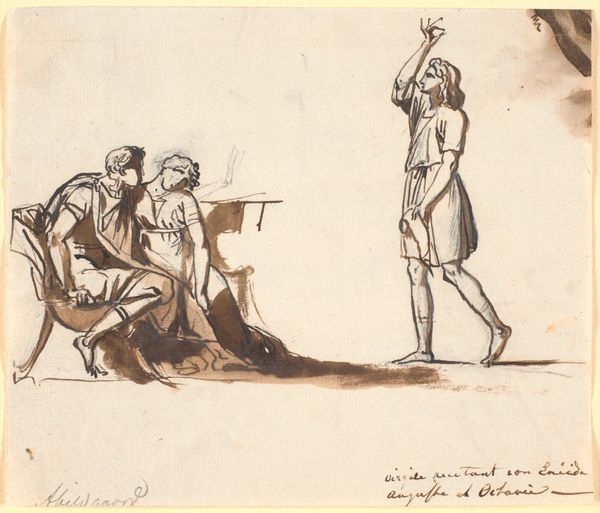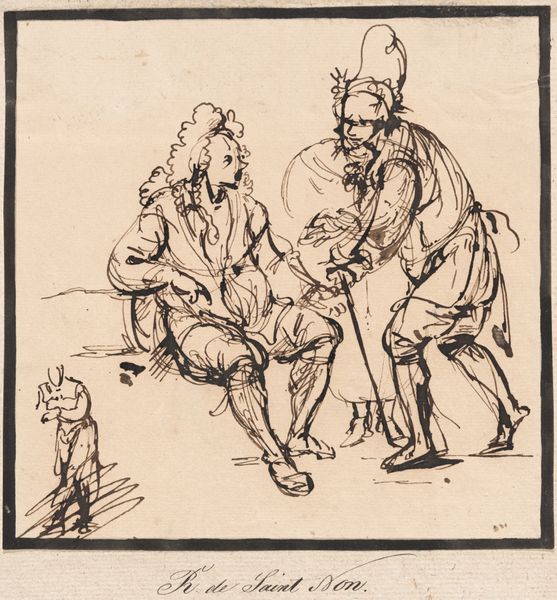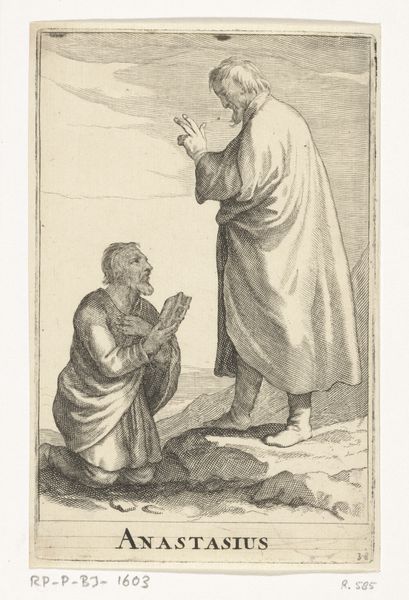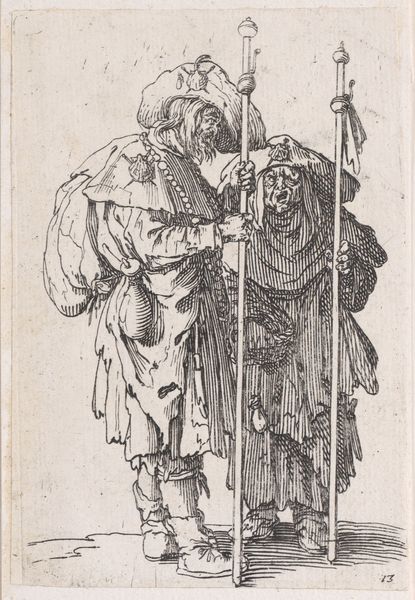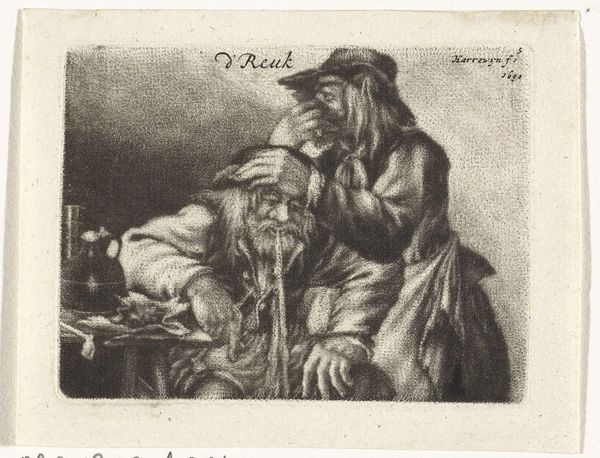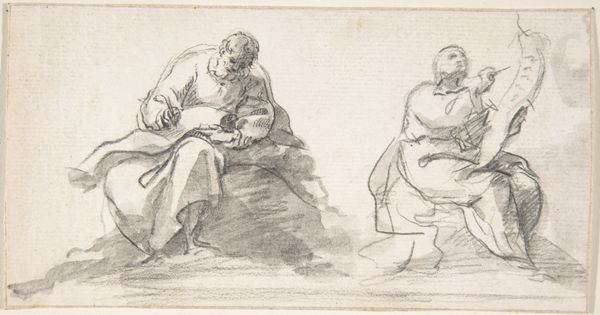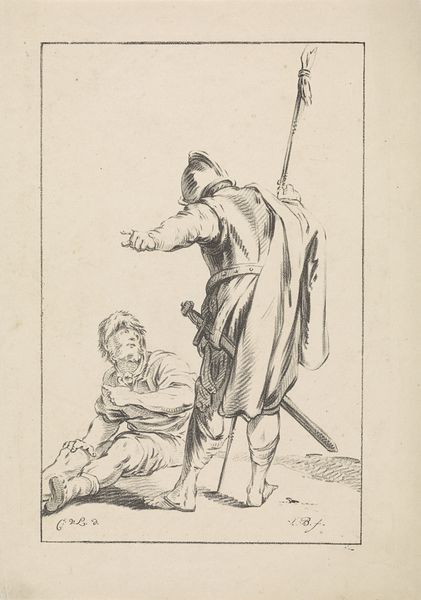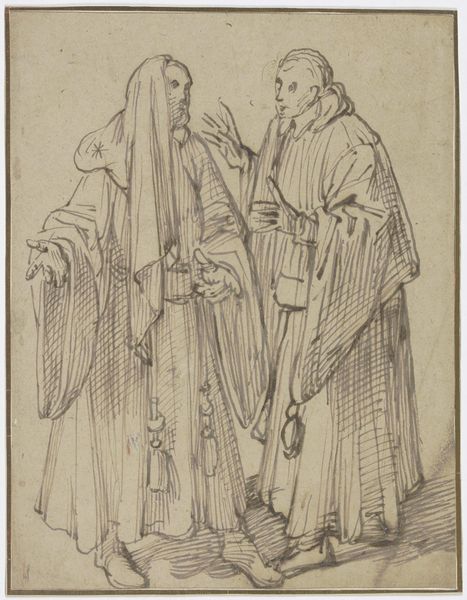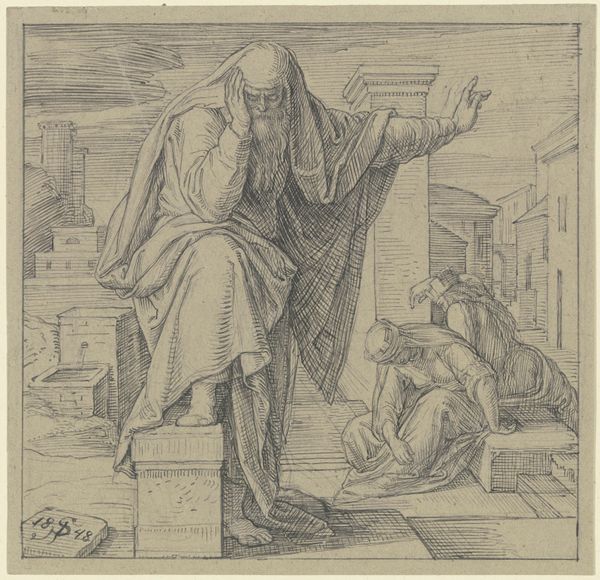
drawing, ink, pen
#
portrait
#
drawing
#
ink
#
romanticism
#
pen
#
history-painting
#
watercolor
Dimensions: 177 mm (height) x 200 mm (width) (bladmaal)
Curator: This pen and ink drawing, executed in 1797 by Nicolai Abildgaard, is titled "Richelieu before Rhadamanthus." The scene depicts the Cardinal confessing his sins. What’s your immediate take on it? Editor: Well, there's a dramatic stillness about it. The sepia tones give it a sense of history, but also a somewhat macabre feel. Rhadamanthus's commanding posture juxtaposed with Richelieu's supplication—it speaks of judgment and consequence. Curator: It's certainly loaded. Abildgaard was working in a politically charged climate. Consider Richelieu: in French collective memory, he stands as a complicated symbol of state power, often seen as a ruthless operator, but also a figure responsible for consolidating the nation. Abildgaard seems to be placing him on trial here, both legally and morally. Editor: Yes, I notice that the artist gives more emotional weight to the figure of Rhadamanthus. His bare torso is so powerful. And I’m struck by the compositional choices. Rhadamanthus is placed higher, literally looking down at Richelieu, the Cardinal is covered, hiding everything. We cannot grasp who he is behind that rich robe. Curator: Exactly! That dichotomy speaks volumes about visibility and accountability. Abildgaard deliberately places Richelieu in the crosshairs. The piece reflects Enlightenment ideas questioning authority and demanding transparency. Editor: So it becomes more than just a historical portrait, but also a condemnation of abuse of power and the consequences of one’s actions, relevant even today. You could even consider Richelieu’s elaborate garments as representative of the structures that enable systemic injustice, making his confession a futile gesture, considering that Rhadamanthus seems unaffected. Curator: I find myself thinking about the function of such a drawing within Abildgaard’s own cultural context. To publicly scrutinize a figure like Richelieu implies a critique of contemporary power structures, challenging viewers to think critically about who benefits from those systems. Editor: Ultimately, for me, the power of this piece lies in its visual simplicity which hides complex narratives about legacy, judgment, and the enduring impact of power. Curator: I concur. It is a potent commentary, cleverly masked within classical motifs and historical figures.
Comments
No comments
Be the first to comment and join the conversation on the ultimate creative platform.
